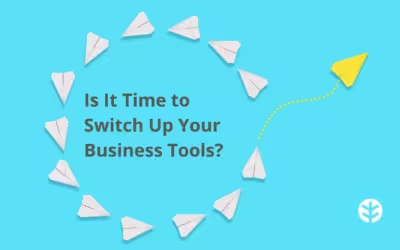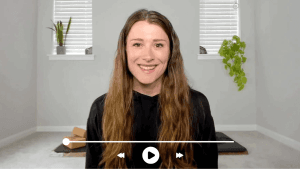Habits are incredibly powerful. They make up a lot of our daily activity, influence much of our life and can have a big impact on both our mental and physical health. And habits are always being challenged and adjusted; we try to end those that no longer serve us or establish newer, healthier ones.
As wellness-preneurs, we want our clients to form habits that are healthy for them so that they can benefit from personal wellness whether that is massage, meditation, dance or yoga. Forming habits around healthy activities is beneficial for our clients and crucial for our businesses.
But our expectation that habits are easily introduced or changed is problematic. In this article, we’re going to talk a little bit about the science behind how we create habits so that we can look at effective tools and strategies to establish new habits, for our clients, and ourselves.
Happy New You!
New Year’s resolutions are the creme-de-la-creme of habit review. With the approach of a new year, we resolve to make a change, hoping that determination and a fresh attitude will be enough to drive it forward.
The fact that the new year is followed three weeks later by a phenomenon known as ‘Blue Monday’ is very telling – marking three weeks into the new year and the day that many resolutions might have failed and regret, disappointment and feelings of defeat creep in.
But the idea that three weeks (or even 30 days) can change a habit is doomed to failure. This oft-used quote came from Cosmetic surgeon Dr. Maxwell Maltz in his 1960’s book “Psycho Cybernetics, A New Way to Get More Living Out of Life,” and it did not refer specifically to habits but rather to the self-image you hold in your mind. And although it has since been widely debunked, like all good myths it lingers in our culture and enables us to inadvertently set ourselves up for failure.
In reality, research has shown that it can take anywhere between 18 days to 254 days to successfully embed a new habit, depending on how complex it is, so we really should go easier on ourselves by the time ‘Blue Monday’ swings around.
The Down-low of Habit-Forming
How habits are formed is a complex, neurological subject but to scratch the surface here, a habit is when an activity becomes part of our routine, so familiar that it is often automatic, enabling the brain to largely switch off until the action is completed. Have you ever driven or walked a familiar route, only to arrive at your destination and realize you can’t remember the journey? You have yourself a habit.
In performing this habit, certain cues indicate the habit is starting and ending – perhaps it is putting your shoes on and getting in the car. Each part of this routine cues the habit, and this is why, when we want to break a habit it is easier to do so if you change the routine entirely, thus preventing that autopilot mode in the brain. And this is also why, when we need to introduce a new habit such as taking a medication, including it in part of an existing routine (such as taking the pills with your morning coffee) can be a successful strategy.
It’s also worth noting that new habits are more easily formed if they don’t require a lot of thought or change, or can be built into an existing part of the routine. So perhaps, committing to a morning meditation while the coffee is brewing – involving the new habit in an existing one – is a good first step.
And research has shown that when a positive emotion is brought on by an action, it is more effective. Similarly, enlisting a goal-oriented system will help to develop a habit faster – pairing an action or behavior with a reward.
Helping Clients to Create Habits
At the time of writing this article, the COVID-19 pandemic is in full throttle around the world, and research on the mental health impact that this has taken on people is grim reading. Anxiety is almost two times higher than pre-pandemic levels and rates of depression have tripled, therefore services that promote mindfulness or stress-reducing movement practices and meditations are more essential than ever.
But the challenge the wellness industry faces is that with nervous systems on high alert, introducing new habits can be even more difficult. One way that the mind can open up to a new habit is if there is a positive emotion or experience associated with it, so if we can provide a service focused on emotions such as awe, gratitude, joy or acceptance there is a better chance of success.
Consider – how often have you attempted to establish a habit for yourself but have fallen short, whether that is a regular meditation or movement practice, or even regular study, or self-care? Even when we know that there are benefits to be experienced by committing to a new habit, it can still be difficult to embed it as part of a routine. So taking into account the different strategies that can help the habit to form is a smart business idea.
Example – a fitness studio might offer a 100-day challenge with a reward of free membership for completion. The strategy within this could be:
- placing a chart in a very visible area that shows client progress and creates accountability;
- repeating affirmations;
- reiterating the goal; and
- recognizing progress milestones.
All of this creates a positive experience for the client as well as the positive changes in mind, body and spirit as a result of their regular fitness regime. By promoting the achievement to the wider community it encourages other clients to join in the challenge and support each other.
Another example could be a client seeking to begin a meditation habit. Starting with a meditation that lasts just a couple of minutes per day and gradually increasing that time is more likely to succeed, so perhaps you provide the client with meditations that increase in length over time to help them create the habit.
Be aware, both as a business owner and when introducing your own habits, that self-defeatism, fear of failure and negative feelings that might arise if you feel you have failed to reach the goal can all work against the new habit being established. So in your strategy, recognize that there will be ‘good days’ and ‘bad days’ in every experience, but these can be overcome and the important thing is to keep moving forward.
One final thing to note is that according to research it is easier to begin a new habit than to modify an old one. This might be important to keep in mind when working with clients that are already loyal to your services but want to switch up what service they use.
Tips for Creating Habits in Your Business and your Life
So in summary, here are our top tips for successful habit-forming:
- Start small. Build onto the habit over time.
- Use a goal-oriented system.
- Use positive reaffirmation of the goal.
- Highlight the positive emotion that will be experienced
- Allow for the bad days. Encourage getting back on track.
- Patience and sustainability are key.
- Accountability buddies – encouraging clients to partner up for accountability.
- Consider using a challenge – a 30-day challenge can be a good place to start, but this will not establish a habit on its own.
And scratch Blue Monday from your calendar once and for all!
OfferingTree is a website platform to support your wellness business, built with the guidance of wellness professionals. Our intention is to take care of the tech so that you can take care of your clients.








